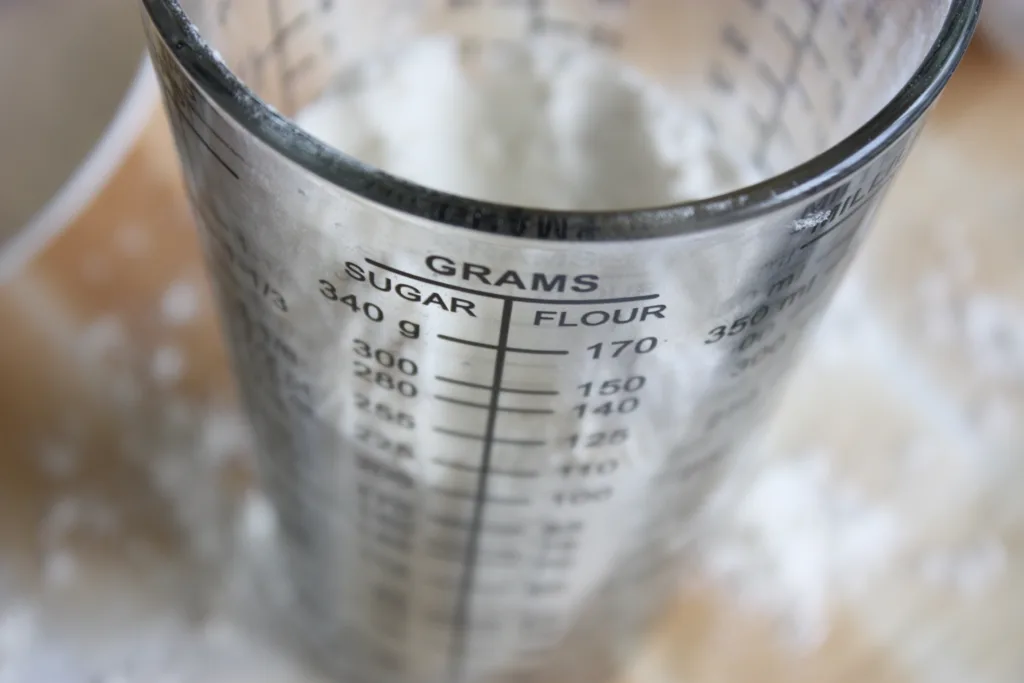Grams are a unit of measurement that is commonly used to measure the mass of very light objects. In the International System of Units (SI), the gram is defined as one one thousandth of a kilogram. This means that a gram is a small fraction of a kilogram, making it a convenient unit for measuring small quantities.
To put it into perspective, a small metal paperclip typically has a mass of around 1 gram. This gives you an idea of just how light a gram is. Other objects with a mass of about 1 gram include a stick of gum and a dollar bill. So, when we talk about the weight of a serving of food in grams, we are referring to the total mass of everything in that serving.
For example, let’s consider a 142 gram serving of strip sirloin steak, which is equivalent to 5 ounces. In this serving, you would find approximately 32 grams of protein, 7 grams of fat, and 0 grams of carbohydrates. This adds up to a total of 39 grams of macro “weight” in that steak.
It’s important to note that grams are not just used for measuring the mass of objects. They are also used to measure the mass of liquids. For instance, if you have a recipe that calls for 250 grams of water, you would measure out 250 grams of water using a kitchen scale or a measuring cup.
The gram is a versatile unit of measurement because it can be used to measure both solids and liquids. It allows for precise and accurate measurements, which is particularly important in fields such as cooking, chemistry, and physics.
When it comes to measuring mass, it’s essential to differentiate between weight and mass. Weight is the force exerted by an object due to gravity, while mass is a measure of the amount of matter in an object. Although weight is commonly measured using grams or kilograms, it is important to remember that weight can vary depending on the gravitational force acting on an object. On the other hand, mass remains constant regardless of the gravitational force.
In everyday life, we often use the terms weight and mass interchangeably, but it’s crucial to understand the distinction between the two. This is particularly important in scientific contexts where precise measurements are required.
Grams are a unit of mass commonly used to measure the weight of light objects. Whether it’s measuring the mass of a small metal paperclip, a serving of food, or a liquid, grams provide us with a precise and accurate measurement. So, the next time you come across the term grams, you’ll have a better understanding of what it entails.
What Is Gram Example?
Grams are a unit of measurement commonly used to quantify the mass of very light objects. These objects typically have a mass of about 1 gram. Some examples of items that weigh approximately 1 gram include:
1. Metal paperclip: A small paperclip made of metal has a mass of around 1 gram.
2. Stick of gum: A typical stick of chewing gum weighs about 1 gram.
3. Dollar bill: A single US dollar bill has a mass of approximately 1 gram.
It is important to note that the mass of objects can vary slightly depending on their composition and size. However, for general reference, the examples provided give a good indication of objects that weigh around 1 gram.

What Is Gram In Food?
A gram in the context of food refers to a unit of weight measurement. It is commonly used to quantify the amount of various nutrients or ingredients present in a serving of food.
In the case of nutritional information, the gram weight provides an indication of how much of a particular nutrient or ingredient is present in a specific serving size of food. This measurement is crucial for individuals who are conscious of their dietary intake and want to track the amount of nutrients they consume.
For example, when you see a label indicating that a serving of food contains 10 grams of protein, it means that there are 10 grams of protein in that specific serving size. This information helps individuals determine their protein intake and make informed decisions about their diet.
Gram weight is also used for other nutrients such as carbohydrates, fats, fiber, and sugars. By providing the gram weight for each nutrient, food labels enable individuals to understand the nutritional composition of the food they consume.
To summarize, the gram weight in food is a unit of measurement used to quantify the amount of various nutrients or ingredients present in a serving size. It allows individuals to track their nutrient intake and make informed dietary choices.
What Are Grams In Weight?
Grams are a unit of measurement used to quantify the weight or mass of an object. Specifically, a gram is defined as one one-thousandth of a kilogram, which is the base unit of mass in the International System of Units (SI). In simpler terms, a gram is a very small unit of weight. To put it into perspective, the mass of a typical pen cap is approximately 1 gram.
Grams are often used in various fields, such as science, cooking, and everyday life, to accurately measure the weight of objects. They are commonly used in weight scales, which provide precise readings of an object’s mass. These scales are capable of measuring the weight of a wide range of objects, offering reliable and accurate measurements.
It is important to note that grams are a unit of mass, not weight. While weight refers to the force exerted on an object due to gravity, mass is the amount of matter an object contains. However, in everyday language, the terms weight and mass are often used interchangeably. With that being said, weight scales can still provide an accurate reading of an object’s mass using the unit of grams.
Grams are a unit of measurement used to quantify the mass or weight of an object. They are commonly used in weight scales to provide precise measurements, and one gram is equal to one one-thousandth of a kilogram.
What Is The Size Of 1 Gram?
The size of 1 gram is a measurement of mass. It is equal to 1/1,000 of a kilogram, which is the base unit for mass in the International System of Units (SI). To give you a better idea of its size, 1 gram is approximately equivalent to the mass of one cubic centimeter of water.
To put it into perspective, here are some examples of common objects that weigh around 1 gram:
– A paperclip
– A small metal bolt or nut
– A single US dollar bill
– A standard-sized paperclip
– A small grape or cherry tomato
– A single AA battery
These examples demonstrate that 1 gram is a relatively small amount of mass. It is often used as a unit of measurement for lightweight objects or substances.

Conclusion
Grams are a unit of measurement used to determine the mass of objects. It is part of the International System of Units (SI) and is equal to one one thousandth of a kilogram. A gram is approximately equivalent to the mass of one cubic centimeter of water. It is commonly used to measure very light objects, such as a small metal paperclip, a stick of gum, or a dollar bill, which all have a mass of around 1 gram. When referring to gram weight in relation to food servings, it represents the total weight of everything in that serving, including protein, fat, and carbohydrates. A weight scale is commonly used to accurately measure the mass of objects in grams. grams provide a precise and standardized method for measuring the mass of various objects.
